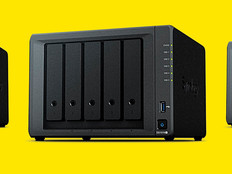How the Pinckney Community Schools System Is Preparing for the Future (Part 2)
By and large the upgrade went smoothly, with only a few hiccups, McCurdy and Kidd say. Getting the new network electronics to connect to the district's 10-year-old fiber-optic backbone was an initial challenge.
"We had issues with getting the fiber-optic cable to link properly with the upgraded network," Kidd explains.
"Going from 1 gigabit to 10 gigabits caused some problems. So we called in a fiber-optics company. It found that a previous installer had swapped fiber pairs so they weren't aligning properly. They remapped the pairs, polished the ends, tested them and made sure they worked correctly."
The tight time constraints added to the difficulty, as the team worked to complete the implementation before the 2010–2011 school year began. The aggressive schedule faced an additional challenge when, in the middle of the summer upgrade, Kidd had to go in for minor surgery.
"That was a big snag," he acknowledges. "But quite a few CDW employees jumped in to fill the gap to make sure everything was working properly. They went beyond what we asked them to do, helping us do things like get new printers we had purchased connected to the network."
The project ultimately extended into the following school year, in part because the district kept finding things it wanted to add, McCurdy says. For example, they chose to extend the Wi-Fi network out to the football stadium at Pinckney Community High School, home of New Tech High, one of a dozen tech-centric high schools in Michigan geared toward students seeking careers in science and technology.
"We had parents sitting out there waiting for their kids to finish practice. We thought we'd give them Wi-Fi access so they could use their personal devices," McCurdy says. "The first week we had it, our athletic director, Tedd Bradley, went out there and saw all these kids sitting in the stands waiting for practice to start with their notebooks open, doing their homework. It was so cool he took a photo of it."
There's still some tweaking to be done, he says. The district plans to implement an IP-based public address system and hopes to extend the wireless network to the bus parking area. It also is looking to add IP video surveillance systems to the school buses.
Open or Closed?
Creating an open Wi-Fi network presents challenges as well — particularly when it comes to managing unlimited student access to the Internet. Originally, the district planned to lock down the network and limit access only to specific devices, Kidd says. But that soon changed.
"We realized that was ridiculous," Kidd says. "All we were doing was preventing people from logging on. We then said, 'Let's make sure our servers and information systems are secure so people can't hack into them, but allow anyone to get on the network.' "
The district also decided against creating separate virtual LANs for staff and students, Kidd says, in part because teachers needed to see what the students were doing online, and being on separate networks would have made that requirement difficult to achieve.
Having an open Wi-Fi network also raises the question of how to handle situations that arise when students bring their own devices to school.
As part of the federal E-Rate program, PCS is required to filter student Internet access and block potentially offensive sites. Anyone who accesses the Internet via the district's Wi-Fi network is automatically monitored by its M86 WebMarshal gateway. But students can use their 3G and 4G smartphones to bypass the content filters. Additionally, allowing students to use their own devices can make designing coursework tricky for teachers because not all students have the same access to devices and tools, McCurdy adds.
Though every school has an acceptable use policy that defines what students can and can't do with their devices, PCS ultimately decided that each school and each teacher would determine how to handle devices in the classroom, he says.
"Teaching in a technology-enriched environment is not for the faint of heart and should not be taken lightly," McCurdy says. "Putting 30 adolescents in a room where they can go anywhere they want on the Internet at any time can be one of the most daunting tasks anyone can take on."
Invisible Web
All challenges aside, the effect of ubiquitous Internet access on education has been profound at PCS, McCurdy says.
"Now that we have a robust wireless network, you can just close your eyes and forget about it," he says. "That's huge. We can now say that anytime, anywhere computing is a reality in our school district. And we've saturated the environment with so many devices, we're beginning to see some shifts in classrooms."
For example, teachers now have the flexibility to deliver information in multiple formats, such as video lectures that students can watch at home. That in turn frees teachers to use their classroom time for more interaction and student discussion, McCurdy says. It also spurs teachers to come up with creative ways to engage in a project-based curriculum. Instead of merely measuring students on their ability to absorb the content, teachers can use technology to hone students' written and oral communications, allow them to collaborate on projects, sharpen their presentation skills, and enhance their attention to detail and their ability to meet deadlines.
"Now that the technology is in place, it facilitates and enables those kinds of projects," he observes. "It also extends the school day. We are now leveraging students' time outside of the classroom in ways we were never able to do before."






